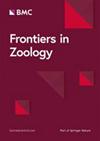De novo assembly of transcriptomes and differential gene expression analysis using short-read data from emerging model organisms – a brief guide
IF 2.6
2区 生物学
Q1 ZOOLOGY
引用次数: 0
Abstract
Many questions in biology benefit greatly from the use of a variety of model systems. High-throughput sequencing methods have been a triumph in the democratization of diverse model systems. They allow for the economical sequencing of an entire genome or transcriptome of interest, and with technical variations can even provide insight into genome organization and the expression and regulation of genes. The analysis and biological interpretation of such large datasets can present significant challenges that depend on the ‘scientific status’ of the model system. While high-quality genome and transcriptome references are readily available for well-established model systems, the establishment of such references for an emerging model system often requires extensive resources such as finances, expertise and computation capabilities. The de novo assembly of a transcriptome represents an excellent entry point for genetic and molecular studies in emerging model systems as it can efficiently assess gene content while also serving as a reference for differential gene expression studies. However, the process of de novo transcriptome assembly is non-trivial, and as a rule must be empirically optimized for every dataset. For the researcher working with an emerging model system, and with little to no experience with assembling and quantifying short-read data from the Illumina platform, these processes can be daunting. In this guide we outline the major challenges faced when establishing a reference transcriptome de novo and we provide advice on how to approach such an endeavor. We describe the major experimental and bioinformatic steps, provide some broad recommendations and cautions for the newcomer to de novo transcriptome assembly and differential gene expression analyses. Moreover, we provide an initial selection of tools that can assist in the journey from raw short-read data to assembled transcriptome and lists of differentially expressed genes.利用新兴模式生物的短读数数据重新组装转录组并进行差异基因表达分析--简要指南
生物学中的许多问题都因使用各种模型系统而受益匪浅。高通量测序方法是各种模型系统民主化的一个胜利。它们可以对感兴趣的整个基因组或转录组进行经济测序,通过技术变异甚至可以深入了解基因组的组织以及基因的表达和调控。对此类大型数据集进行分析和生物学解释可能会面临重大挑战,这取决于模型系统的 "科学地位"。对于成熟的模式系统来说,高质量的基因组和转录组参考文献唾手可得,而对于新兴的模式系统来说,建立这样的参考文献往往需要大量的资源,如资金、专业知识和计算能力。从头组装转录组是在新兴模式系统中进行遗传和分子研究的绝佳切入点,因为它既能有效评估基因含量,又能作为差异基因表达研究的参考。然而,从头组装转录组的过程并不简单,通常必须根据经验对每个数据集进行优化。对于使用新兴模型系统的研究人员来说,如果在组装和量化来自 Illumina 平台的短线程数据方面几乎没有经验,那么这些过程可能会令人生畏。在本指南中,我们概述了从头建立参考转录组所面临的主要挑战,并就如何开展这项工作提供了建议。我们描述了主要的实验和生物信息学步骤,为从头开始转录组组装和差异基因表达分析的新手提供了一些广泛的建议和注意事项。此外,我们还提供了从原始短线程数据到组装转录组和差异表达基因列表的初步工具选择。
本文章由计算机程序翻译,如有差异,请以英文原文为准。
求助全文
约1分钟内获得全文
求助全文
来源期刊

Frontiers in Zoology
ZOOLOGY-
CiteScore
4.90
自引率
0.00%
发文量
29
审稿时长
>12 weeks
期刊介绍:
Frontiers in Zoology is an open access, peer-reviewed online journal publishing high quality research articles and reviews on all aspects of animal life.
As a biological discipline, zoology has one of the longest histories. Today it occasionally appears as though, due to the rapid expansion of life sciences, zoology has been replaced by more or less independent sub-disciplines amongst which exchange is often sparse. However, the recent advance of molecular methodology into "classical" fields of biology, and the development of theories that can explain phenomena on different levels of organisation, has led to a re-integration of zoological disciplines promoting a broader than usual approach to zoological questions. Zoology has re-emerged as an integrative discipline encompassing the most diverse aspects of animal life, from the level of the gene to the level of the ecosystem.
Frontiers in Zoology is the first open access journal focusing on zoology as a whole. It aims to represent and re-unite the various disciplines that look at animal life from different perspectives and at providing the basis for a comprehensive understanding of zoological phenomena on all levels of analysis. Frontiers in Zoology provides a unique opportunity to publish high quality research and reviews on zoological issues that will be internationally accessible to any reader at no cost.
The journal was initiated and is supported by the Deutsche Zoologische Gesellschaft, one of the largest national zoological societies with more than a century-long tradition in promoting high-level zoological research.
 求助内容:
求助内容: 应助结果提醒方式:
应助结果提醒方式:


